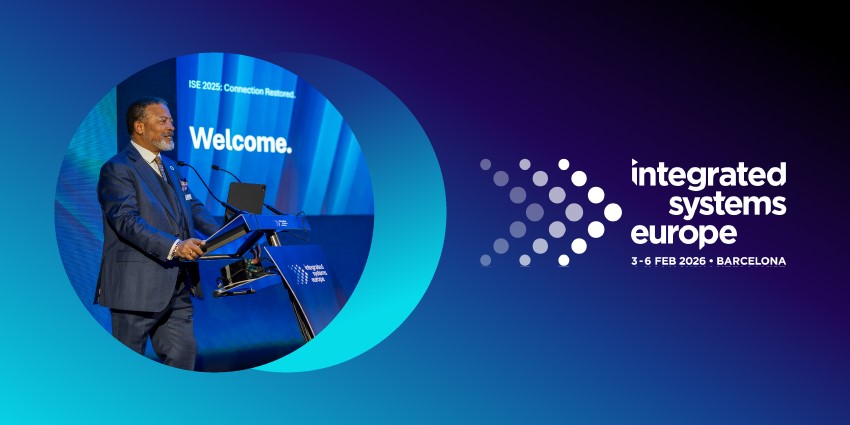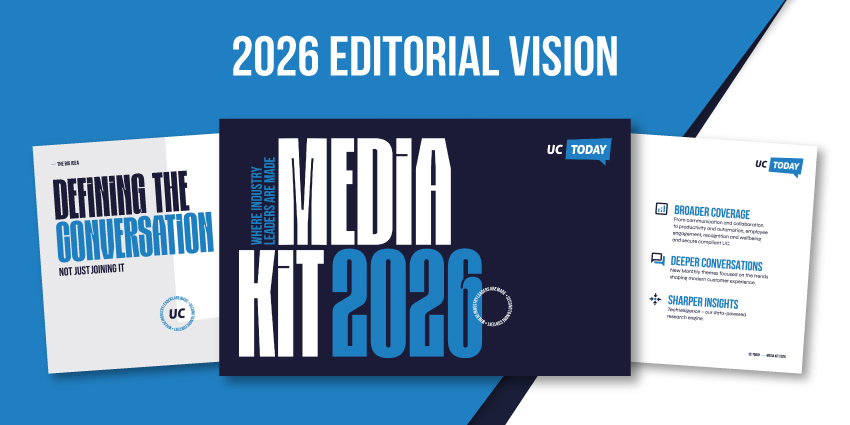The age of extended reality for the enterprise is here, and this time, we mean it. Over the last year, fun demos have given way to genuine, concrete case studies of VR, AR, and MR tools all making a real difference across industries. Extended reality automotive use cases, in particular, are starting to gain a lot more attention.
Analysts estimate the extended reality in automotive market was worth about $43 billion in 2024, with forecasts putting it near $69 billion by 2034. The wider XR space is expanding even faster, expected to grow from roughly $253 billion in 2025 to more than $1.6 trillion by 2032 as new business applications emerge.
Why the acceleration? Electric vehicle programs, distributed design teams, supplier networks that span time zones, and a skills crunch on the factory floor. That mix demands shared 3D context, remote co-creation, and hands-free guidance that fits inside the collaboration stack you already run. In other words, XR in automotive spaces is evolving into part of unified communications and workplace management, not a side project in a lab.
Extended Reality Automotive Market Momentum
If 2024 was the warm-up, 2025 is when extended reality automotive strategies hit their stride. The technology has moved past experimental labs into the boardroom, factory, and dealership. Analysts now see XR as an enterprise utility, not a novelty.
Plenty of companies are already digging in.
BMW’s “Virtual Factory,” built with NVIDIA’s Omniverse and OpenUSD, is a headline example scaling in 2025. The company simulates layouts for more than 30 global plants, trimming weeks from physical planning cycles.
Other OEMs like Hyundai, Mercedes-Benz, and Stellantis, are building similar “digital twin” environments to test logistics and workforce planning before steel is ever cut.
The market’s becoming more flexible too. The OpenXR and OpenUSD frameworks are emerging as the common language connecting CAD, real-time 3D engines, and collaboration apps. Hardware options are opening up, with emerging ecosystems from Samsung, Meta, and Apple.
Samsung’s new Galaxy XR platform integrates Android XR and Google’s Gemini AI; Meta continues to push business-grade collaboration through Horizon OS and Ray-Ban Display glasses; and Apple is driving high-end enterprise adoption with Vision Pro and its refined spatial-computing SDKs. Each is vying to own the interface for industrial metaverse collaboration.
For leaders evaluating adoption timing, this is what we call the XR inflection point, the moment when capability, cost, and business readiness finally align.
So, what are the use cases?
Design, Prototyping & Decision-Making
If there’s one area where extended reality automotive ideas have gone from cool to critical, it’s design. What used to live on screens or clay models now unfolds in life-sized, shared virtual spaces where teams can literally walk around an idea before it becomes metal.
At BMW, the Virtual Factory is a masterpiece of digital collaboration. Using NVIDIA’s Omniverse and OpenUSD, engineers can map out entire production plants and tweak layouts in real time. They’ve modeled over dozens of factories, slicing planning time from weeks to days, and avoiding millions in rework.
Ford’s design crews are doing something similar with Gravity Sketch. Picture designers across Detroit, Cologne, and Shanghai sketching a car together in 3D space, debating curves, and swapping ideas midair.
Startups like Rivian and long-time innovators like Volvo are seeing the same benefits. Using Varjo and Unity, they run high-fidelity design reviews where light, materials, and ergonomics behave just as they would on the real road.
Even the decision-making process feels transformed. Autodesk’s XR-based reviews let managers, designers, and safety engineers stand inside a digital model together, test visibility, and sign off on changes on the spot. Meanwhile, BMW and Meta Reality Labs are pushing “car-locked” XR that syncs headset tracking with vehicle sensors, meaning the virtual car actually drives like the real one.
Manufacturing, Training & Workforce Enablement
On the factory floor, extended reality automotive use cases are changing everything. Walk into a next-gen assembly plant today and you’ll find operators learning through holograms, not handbooks. The days of crowding around a static demo are almost gone.
At Stellantis, immersive training has replaced traditional onboarding. Thousands of workers now practice intricate assembly steps in virtual environments before ever touching a vehicle. The results are hard to ignore: training times down around 40%, safety incidents dropping, and new recruits walking onto the line ready to perform from day one.
Schnellecke Logistics took a similar leap. Using TeamViewer Frontline and AR “vision-picking,” warehouse teams see digital instructions projected right into their field of view. The payoff? Zero picking errors, 20% faster throughput, and a workforce that can flex between tasks without constant supervision.
What makes this wave different is how connected it is. XR training modules now tie directly into the same platforms used for calls and meetings, so supervisors can monitor, annotate, or coach in real time. It’s workforce enablement and unified communication rolled into one.
Sales, Marketing & Customer Experience
Buying a car has never been only about specs or performance. There’s that gut moment when a model feels right, when you picture it sitting in your driveway. What’s changing in 2025 is how that feeling begins. With extended reality automotive tools, shoppers can wander through digital showrooms, look around the cabin, and try out colors or features from their couch. It’s surprisingly intimate, closer to the real thing than a brochure or website could ever get.
At Mercedes-Benz and BMW, global launches now unfold in hybrid showrooms powered by XR. Instead of flying journalists and dealers halfway around the world, brands host walk-throughs in shared virtual environments where participants can explore interiors, toggle specs, and even “sit” behind the wheel. It’s greener, cheaper, and more consistent across markets.
When customers can explore a car in XR, something changes. Capgemini found that immersive retail spaces boost buyer confidence and strengthen long-term loyalty by giving people a genuine sense of what they’re investing in. Shopify reports that interactive 3D configurators can push online conversion rates up by nearly 94 percent. Once someone can step inside a vehicle virtually, seeing the stitching, the lighting, the space, the decision feels natural instead of uncertain.
Behind the scenes, enterprise teams are using these same environments for dealer training and global marketing rollouts. Endava helped one automaker build a multi-sensory VR experience that allowed remote sales teams to learn product lines without ever setting foot in a showroom.
In-Vehicle & Passenger XR Experiences
The line between the digital cabin and the driver’s world is getting beautifully blurry. What used to be a dashboard with screens is turning into a panoramic, data-rich canvas, and extended reality automotive leaders are steering that change.
At the front of the pack, BMW’s new iDrive HUD, debuting on the Neue Klasse in late 2025, projects a full-width augmented-reality display across the windshield. Navigation cues, hazard alerts, and real-time vehicle data seem to float ahead of the car, layered perfectly over the driver’s view of the road. It feels less like using tech and more like gaining a new sense.
This builds on BMW’s research with Meta Reality Labs, where headset tracking syncs with the car’s sensors to stabilize XR content even in motion. That work solves one of the hardest problems in automotive XR, anchoring visuals accurately as the vehicle moves.
Mercedes-Benz is bringing similar magic to market with its MBUX AR HUD, already live in production models. Drivers see directional arrows or safety notifications appear directly in their line of sight, improving focus and reducing distraction.
The business upside goes far beyond the wow factor. These in-car experiences create entirely new data channels and service opportunities, from contextual infotainment to subscription-based navigation layers. For fleet operators, it means smarter route management and better safety compliance.
Plus, because these systems connect through the same unified platforms used for voice and video, the vehicle itself is fast becoming a mobile workspace. As Mercedes recently proved by enabling Teams video calls while driving, the cockpit is evolving into the next huddle space.
After-Sales, Service & Supplier Ecosystem
Once a car rolls off the production line, the story isn’t over; it just shifts to a different gear. Service, maintenance, and supplier coordination are where customer experience can shine or stumble, and extended reality automotive is quietly rewriting that script.
Look inside Porsche’s PARiS system, short for Porsche Augmented Reality in Service. Technicians wear smart headsets that layer digital schematics directly over the actual car. The diagrams update as they move, showing torque points, cable paths, or part IDs right in their line of sight. There’s no paging through manuals or second-guessing a connection. Porsche says the system has shaved hours off repairs and pushed first-time fix rates to new highs.
Startups are playing their part too. Plutomen has created AR tools for remote inspections, and Antaeus AR documented a full AR-assisted repair journey that took an inexperienced user from “clueless to confident” in minutes. TeamViewer Frontline reports that manufacturers using its AR remote-support tools are achieving 30–40% higher first-time fix rates and cutting travel by up to 35%.
This is a big shift in how service networks communicate. Support calls turn into immersive sessions where experts can annotate, highlight, and guide live. That’s unified communication, supercharged with spatial context.
Extended Reality Automotive Enablers, Challenges & Deployment Tips
There’s still a way to go before extended reality is absolutely everywhere, but we’re moving in the right direction.
The biggest accelerators are the ones you can’t see. 5G and edge computing now deliver the low latency needed for real-time rendering and remote collaboration. AI co-pilots, such as Google’s Gemini Live, are creeping into XR platforms, turning natural gestures and speech into instant commands. And open standards like OpenXR and OpenUSD are finally giving design and manufacturing systems a common language.
The “industrial metaverse” is also maturing fast. BMW and Hyundai are using it to link design, production, and logistics data in one continuous XR environment.
The hurdles, on the other hand, are more human than technical. Creating solid, interactive content takes practice, and linking new systems with old engineering tools can feel like rewiring the factory floor. Privacy rules, data ownership, and proving ROI all add pressure. The companies that thrive treat XR as a learning curve, not a race. They pilot one process, collect the wins, and build outward from there.
If you’re interested in diving in, now’s a good time to start small. Pick a single workflow (like training), and prove the ROI before scaling. Choose devices that fit your environment: Samsung Galaxy XR, Apple Vision Pro, or Meta Quest 4 for immersive sessions; XREAL or Vuzix glasses for field operations. Manage them with enterprise MDM tools.
Track results the same way you would any transformation: hours saved, iterations avoided, or first-time fix rates improved. Then scale using a structured model.
The Extended Reality Automotive Promise
Across the sector, XR has become a lever for speed and growth. Design teams can sign off on prototypes overnight, and technicians can train or troubleshoot from another country without losing a minute to travel. That new agility is what makes extended reality automotive such a powerful investment.
But there’s a cultural change happening too. As these immersive tools merge into everyday collaboration stacks, they’re changing how teams communicate.
XR meeting rooms are popping up inside Teams and Meet, complete with spatial audio, live captions, and real-time AI translation. What used to be a video call is turning into a shared 3D workspace where people actually feel present together.
The appeal of XR in automotive isn’t about escaping the real world. It’s about improving it. These tools give dispersed teams a stronger sense of presence, keep production running smoothly, and help customers connect with a brand on a more personal level.







